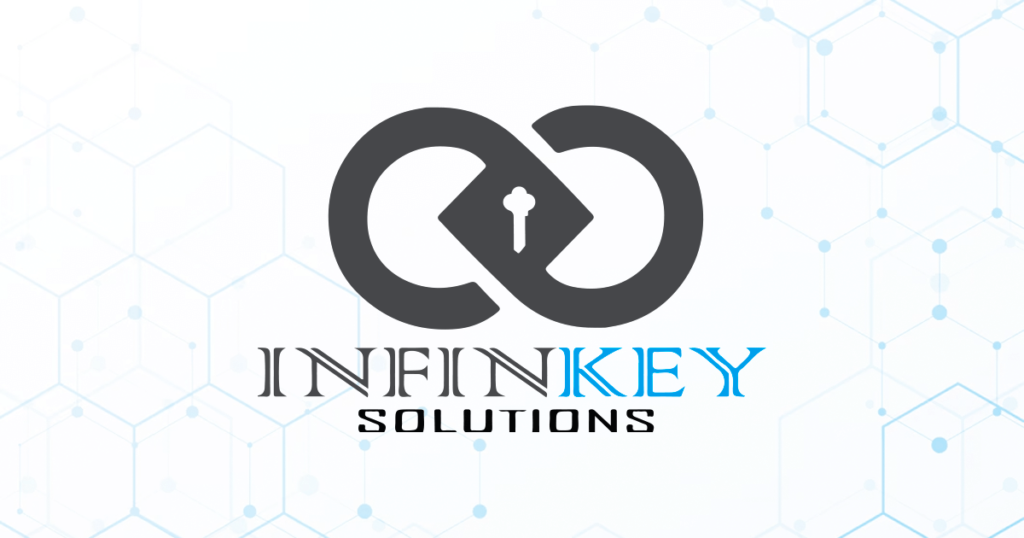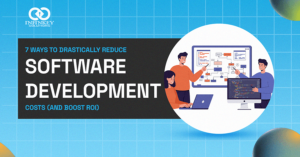What is an API?
An API (Application Programming Interface) is a set of rules and protocols that allows different software applications to communicate and share data or functionality.
How APIs Work:
APIs act as a bridge between two systems by receiving requests, processing them, and delivering responses. When an application requests information, the API interacts with the source system and returns the necessary data without exposing the system’s internal workings.
 Real-world Examples of APIs:
Real-world Examples of APIs:
Weather Apps:
Use APIs to fetch real-time weather data from external services.
Payment Gateways:
Online stores use APIs to process payments securely through third-party providers like PayPal.
Social Media Integration:
Apps use APIs to allow users to log in or share content directly to platforms like Facebook or Twitter
Basics of API
APIs send a request from one application to another and receive a response. For example, when you search for weather in an app, it sends a request to the weather server, and the server responds with the current weather information.
HTTP Methods in API Communication
APIs use specific methods to perform actions:
- GET: Used to fetch data (e.g., retrieving user information).
- POST: Used to send new data (e.g., creating a new account).
- PUT: Used to update existing data (e.g., changing a user’s details).
- DELETE: Used to remove data (e.g., deleting a user profile).

Status Codes and Error Handling
APIs return codes to show if a request was successful or failed:
- 200 OK: The request was successful.
- 201 Created: New data was successfully added.
- 400 Bad Request: The request was incorrect (e.g., missing information).
- 401 Unauthorized: Access is denied due to incorrect or missing credentials.
- 500 Internal Server Error: There is a problem with the server.
These methods and codes help applications communicate clearly and handle errors smoothly.
Types of APIs
- Open APIs (Public APIs)
These APIs are available to everyone and can be accessed without restrictions. Companies provide open APIs to allow developers to integrate their services. Example: Google Maps API. - Internal APIs (Private APIs)
These are used within an organization and are not available to the public. They help different departments or systems within a company share data securely. Example: Internal APIs used by a bank for managing customer data. - Partner APIs
These are shared with specific business partners. Access is restricted and requires authorization. They are used to enable collaboration between companies. Example: Payment gateway APIs for e-commerce platforms. Comprehensive Guide to RACI Charts - Composite APIs
These combine multiple API calls into one request. They are useful for performing several actions at once, reducing the number of requests and improving efficiency. Example: An API that fetches user details and order history in a single request.
REST vs SOAP APIs
-
- REST (Representational State Transfer): Lightweight, flexible, and uses standard HTTP methods (GET, POST, etc.). It is the most common type of API for web applications.
- SOAP (Simple Object Access Protocol): More rigid, uses XML for communication, and is ideal for secure and complex operations like financial transactions.
Each type of API serves different purposes depending on security, access, and functionality needs.
Benefits of API Development
- APIs allow different software systems to communicate, reducing the need for manual data entry and improving overall workflow efficiency.
- By reusing existing software components through APIs, businesses save time and money on development.
- APIs make it easy to integrate various tools, platforms, and services, enabling smooth data exchange between them.
- With ready-made API solutions, new features or products can be launched faster without building everything from scratch.
- APIs enable seamless interactions between applications, resulting in better experiences for users.
- APIs help businesses scale their operations easily by allowing them to add new features or integrate with more systems without disrupting the existing ones.
- APIs enable developers to innovate quickly, offering flexibility to adapt to changing market demands.
- APIs allow businesses to connect with external services, opening doors to new markets and customer bases.
- Repetitive tasks can be automated through APIs, freeing up resources for more strategic work.
- APIs offer secure access to resources, with authorization protocols in place to ensure only authorized users can interact with the system.
API Structure
An API (Application Programming Interface) structure outlines how different software systems interact and communicate. It acts as a bridge between different applications, allowing them to exchange data and perform actions without needing to understand each other’s internal processes. Understanding the structure of an API is crucial for developers to build and integrate systems effectively. Let’s break down the core components of an API in detail:
Endpoint
An endpoint is a specific location (URL) where the API can be accessed. Each endpoint represents a particular resource or function that the API provides. Think of it as the address where you send requests to retrieve or modify data.
- Example:
If you want to access user information, the endpoint might be:
https://api.example.com/users - How It Works:
When you send a request to an endpoint, the API processes it and responds with the requested data or performs the specified action.
Request
A request is what you send to the API to interact with it. This can be asking for data, adding new information, updating existing records, or deleting something.
A request typically includes:
- Endpoint: Where the request is sent.
- HTTP Method: The type of action you want to perform.
- Headers: Metadata about the request (like authentication).
- Parameters: Extra data to refine the request.
- Body (Payload): Data being sent (for methods like POST or PUT).
HTTP Methods
HTTP methods define the type of action you want to perform on a resource. Each method corresponds to a particular type of request:
- GET – Retrieve data (e.g., get user information).
- POST – Create new data (e.g., add a new user).
- PUT – Update or replace existing data.
- PATCH – Partially update data.
- DELETE – Remove data.
Example:
- GET /users/123 – Fetch details of user 123.
- POST /users – Create a new user.
- PUT /users/123 – Update user 123’s details.
- DELETE /users/123 – Remove user 123.
Headers
Headers provide additional information about the request or response. They ensure proper communication and secure access between the client (user) and the API.
Common Headers Include:
-
- Content-Type: Specifies the format of data (e.g., application/JSON).
- Authorization: Provides security credentials (e.g., API keys, tokens).
How to Choose an API Structure
Choosing the right API structure is a critical decision when developing an application or system that communicates with others. The API structure defines how different parts of the system will interact, share data, and perform actions. The goal is to create an interface that is easy to use, scalable, and efficient. When choosing an API structure, there are a few key factors to consider.
First, you need to understand the specific needs of the system or application you’re building. For example, if your application requires real-time data, you might need a structure that supports quick, low-latency communication. In contrast, if you’re developing a platform where users will be interacting with large datasets, you may want a structure that optimizes data retrieval and reduces redundancy. How to Build Scalable Web Applications? Top Strategies, Frameworks & Tips
Next, consider the communication style. APIs are generally built to be either synchronous or asynchronous. Synchronous APIs require the client to wait for a response after making a request, whereas asynchronous APIs allow the client to continue other tasks while waiting for a response. If your application needs to handle tasks in real-time, asynchronous communication might be a better fit.
You also have to think about the type of data you’ll be working with. Some APIs are designed to handle JSON (JavaScript Object Notation), while others might use XML or other formats. JSON is popular because it’s lightweight and easy to work with, especially for web applications. It’s also supported by most modern web frameworks and technologies.
Another important aspect is the level of security you require. For example, APIs that deal with sensitive user data should incorporate robust authentication methods such as OAuth or API keys. This ensures that only authorized users can interact with your system. Choosing a structure that includes these security measures will help protect the data and build trust with users.
Finally, scalability is a key factor in selecting an API structure. As your user base grows, your system needs to handle increased traffic without performance issues. A scalable API structure can efficiently manage more requests and larger datasets, ensuring a smooth user experience even as demand rises.
In short, choosing an API structure involves understanding your application’s needs, deciding how data should be exchanged, considering security and scalability, and ensuring the structure is easy to integrate and use. The right API structure will support your app’s growth, functionality, and ability to interact seamlessly with other systems.
Practical Example of an API
A practical example of an API can be seen when you use a weather app on your smartphone. Let’s break it down to understand how an API works in this real-world scenario.
When you open the weather app, you want to see the weather forecast for your city. The app doesn’t store all the weather data locally on your phone. Instead, it needs to request the weather information from an external service, such as a weather provider like OpenWeatherMap or AccuWeather.
Here’s how the process works step-by-step:
You Make a Request:
You open the app and enter your city. The app sends a request to the weather provider’s API. The request is usually sent through an endpoint, which is a specific URL where the weather service accepts requests. The app asks, for example, “What is the weather in Lahore today?”
The API Processes the Request:
The weather provider’s API then processes your request, looks up the weather data, and retrieves the necessary information from its database. This could include temperature, humidity, wind speed, and forecasts.
Response from the API:
The weather service’s API then sends a response back to the app. The response usually contains the weather data, and it’s often in JSON format.
The App Displays the Data:
After receiving the response, the app then processes the data and presents it to you in a readable form, showing you that the current temperature in Lahore is 25°C, it’s sunny, and the wind speed is 10 km/h.
In this case, the API acts as the middleman between the weather provider’s database and your app. It allows the app to request data from the provider’s servers and receive that data in a usable format. The weather app itself doesn’t know how to directly access the weather provider’s internal systems, but through the API, it can retrieve data that it displays to you.
This is just one example of how APIs enable seamless communication between different systems, making data accessible without needing to build everything from scratch. APIs are used in countless applications, from social media sharing to payment systems and beyond.
Future Trends in API Development
The future of API development is rapidly evolving, and several key trends are shaping how APIs will be used and developed in the coming years. Here are some of the prominent trends to look out for:
GraphQL Over REST:
While REST APIs have been the standard for many years, GraphQL is becoming increasingly popular. GraphQL allows clients to request exactly the data they need, which can reduce the amount of unnecessary data transferred and improve performance. It also provides flexibility by enabling developers to create more dynamic queries, reducing the need for multiple API calls.
API-First Approach:
The API-first approach, where APIs are treated as the core of the application development process, is gaining traction. This method emphasizes designing APIs before building the application itself. It encourages better collaboration between teams, improves consistency, and accelerates development, especially when integrating third-party services.
Serverless Architecture:
Serverless computing, where developers focus on writing code without managing the underlying servers, is becoming more prevalent in API development. Serverless APIs can scale more easily, reduce infrastructure costs, and simplify maintenance. This trend allows businesses to focus on business logic rather than on the complexities of server management.
API Security:
As APIs become critical in connecting systems and sharing sensitive data, security remains a top priority. OAuth 2.0, JWT (JSON Web Tokens), and other advanced security protocols will continue to evolve. Expect to see increased use of encryption, stronger authentication mechanisms, and tools that provide detailed analytics to monitor and protect APIs from potential threats.
Automated API Testing and Monitoring:
With APIs becoming more integral to the functioning of businesses, automated testing and continuous monitoring of APIs will grow in importance. This ensures that APIs perform as expected, are free of bugs, and can handle increasing traffic efficiently. Tools that allow real-time performance tracking, error detection, and logging will become more widespread.
Microservices and APIs:
The rise of microservices architecture continues to fuel the growth of APIs. Microservices break down applications into smaller, independent services that communicate with each other via APIs. This trend will result in a greater demand for APIs that are lightweight, modular, and easily deployable, enabling faster and more scalable development.
Low-Code/No-Code API Development:
The need for quick API development will lead to the rise of low-code/no-code platforms that allow non-technical users to create and manage APIs. This will democratize API creation, enabling business users to build APIs without relying on developers for every small change. These platforms will drive efficiency and speed up time-to-market.
API Economy and Monetization:
APIs will become more important in the digital economy, not just as a tool for integration but also as products in themselves. Many businesses will look to monetize their APIs by offering them as paid services or creating marketplaces where third-party developers can access and use APIs for a fee.
AI and Machine Learning Integration:
APIs will increasingly be used to integrate machine learning and AI models into applications. These APIs can offer services like natural language processing, image recognition, and predictive analytics. The growing demand for AI-powered applications will drive the need for more APIs that can facilitate the integration of AI into everyday services.
Edge Computing and APIs:
With the growth of IoT devices and the need for low-latency processing, edge computing is emerging as a major trend. APIs will be crucial in facilitating communication between edge devices and central systems, enabling real-time data processing, and improving performance for applications that require instant responses.
Conclusion
In summary, APIs are a cornerstone of modern application development, allowing different systems to communicate and share data seamlessly. They make it possible for developers to integrate third-party services, automate processes, and enhance user experiences without building everything from scratch. Understanding the different types of APIs and how they function helps businesses streamline operations and create more efficient, scalable applications. In essence, APIs empower developers to deliver innovative solutions that drive growth and improve functionality across platforms.

If you’re looking to leverage the power of APIs to elevate your business, Infinkey Solutions is here to help. Contact us today to explore how our expert team can develop tailored API solutions that drive efficiency and innovation for your business.








